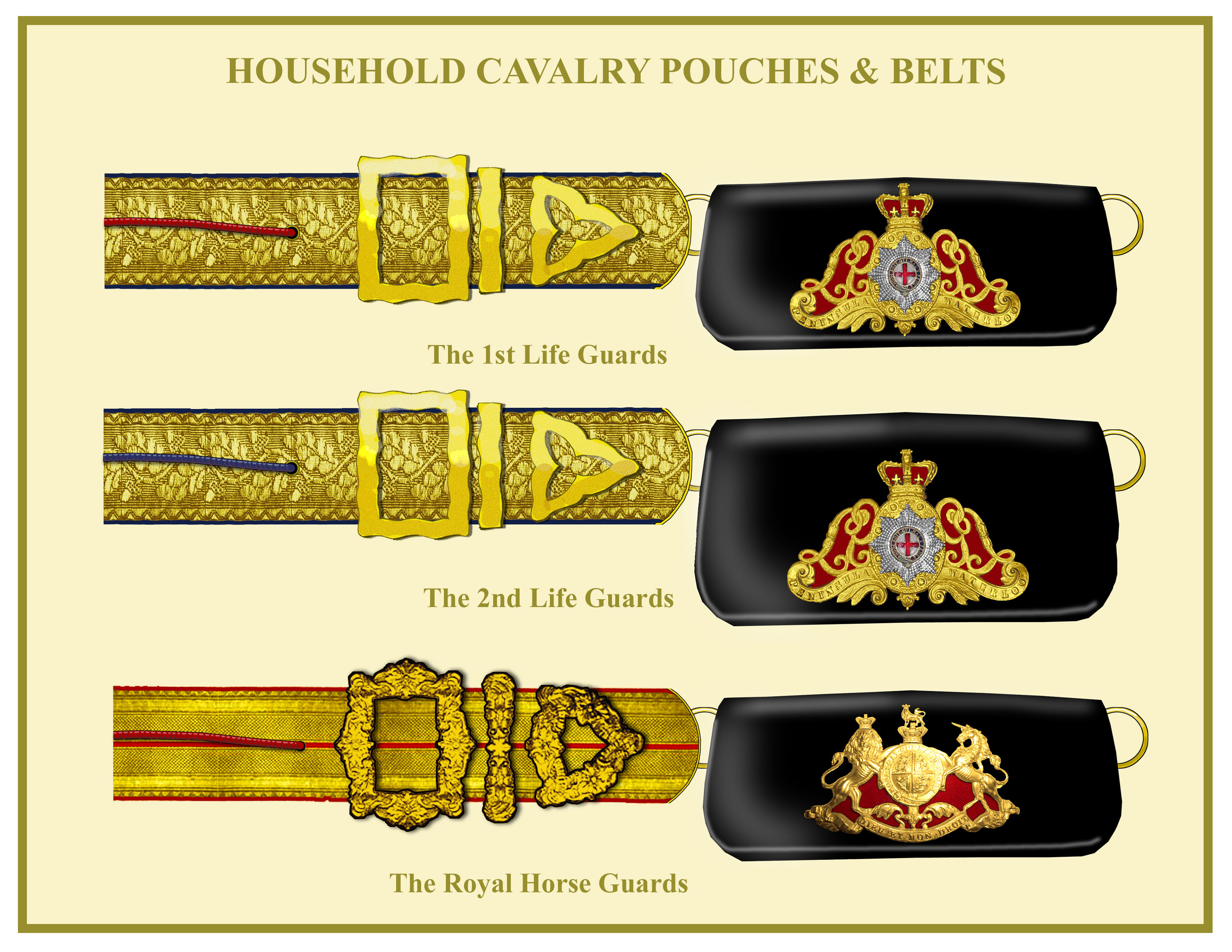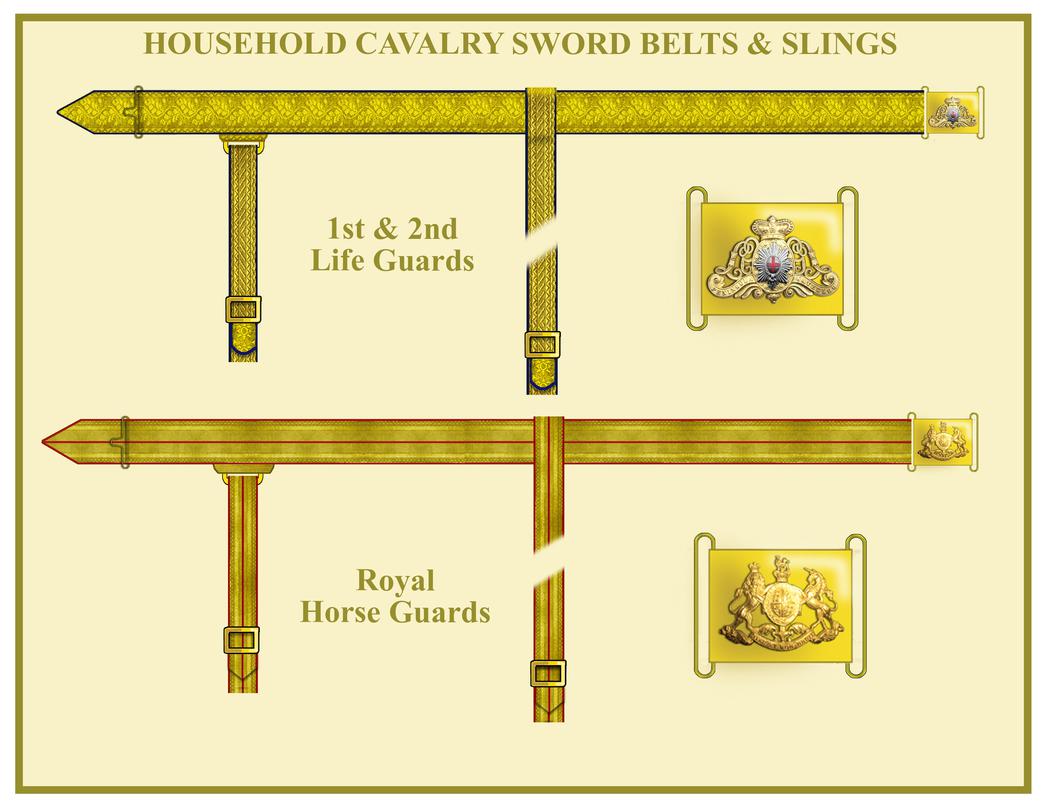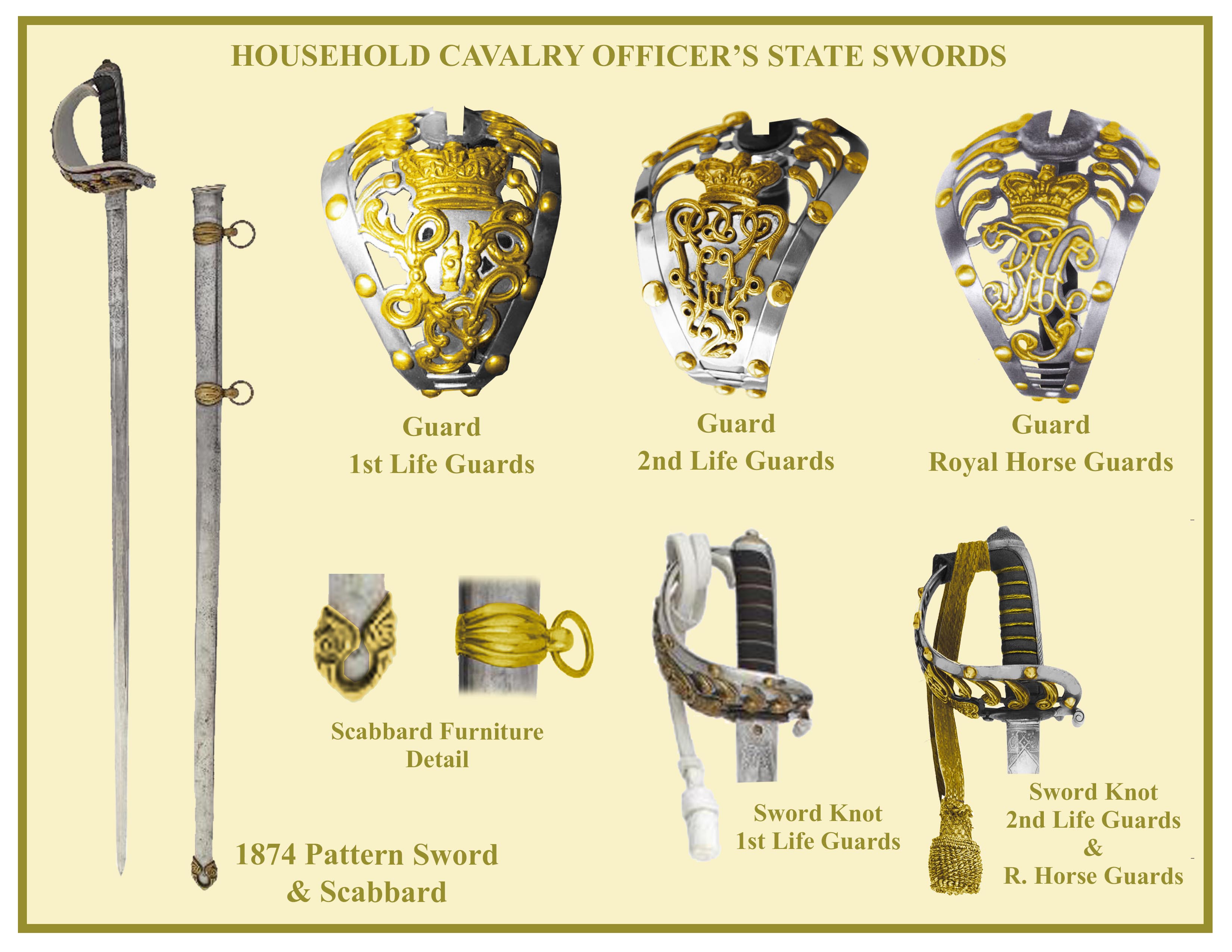FULL DRESS & REVIEW ORDER 1881-1902
UNIFORMS, ARMS & EQUIPMENT - HOUSEHOLD CAVALRY
POUCHES, POUCH BELTS & WAIST BELTS
Until the middle of the 19th century the pouch flaps were covered in cloth decorated with gold lace. After the Crimean War, the pouches and flaps were of highly polished patent leather with a gilt device on the flap. For both Life Guards regiments the device was a Garter Star with red enamelled cross with the gilt crown above. On either side the letters “LG” reversed and intertwined. Below, on a spray of laurel, two scrolls; on the right scroll the battle honour “WATERLOO” and on the left, “PENINSULA”. The badge was on a crimson velvet backing. The backing was not mentioned in the 1900 Dress Regulations. During this period, the 2nd Life Guards had a pouch that was deeper than that in the 1st Regiment. For the Royal Horse Guards, the pouch device was the Royal Arms on a scarlet cloth backing.
The pouch belt was gold lace, 2 ½ Inches wide, on a blue Morocco leather backing edged with blue velvet in the Life Guards scarlet backing in the Royal Horse Guards. The Lace was of Oak Leaf pattern with a central scarlet stripe for the Royal Horse Guards. Attached to three gold loops on the centre of the belt, a flask cord in scarlet for the 1st Life Guards and Royal Horse Guards and blue in the 2nd Life Guards. The fittings were gilt.
Like the pouch, a cloth faced sabretache with gold lace edging and design was worn up to about 1848. It was discontinued and not reintroduced.
SWORD BELT, SWORD & SABRETACHE SLINGS
The sword belt for all three regiments was the same as the shoulder belt only 1 ¾ inches wide. The waist plate had the same device that was on the pouch only smaller and without the backing.
The sword slings were one inch wide and followed the pattern of the sword belt.
THE SWORD, SCABBARD & SWORD KNOTS
Officers of the Household Cavalry have always carried swords that were of a special pattern. Known as State Swords (primarily used for ceremonial occasions) the regulations that described them first appeared in 1822. A new pattern was authorised in 1834 and replaced in 1874. This 1874 State Sword remains virtually unchanged to this day with alterations to the Monarch’s crown being the only difference. Of course, the amalgamation of both Life Guards regiments in 1922 eliminated the regimental number.
The sword hilt design was basically the same for all three regiments with, on the guard the regimental monograms in gilt with, for the Life Guards the number, which for the first regiment was in the centre of the monograms and for the second, below it.
The scabbard had more decorative fittings than the swords of regular cavalry and were of brass.
The sword knot for the 1st Life Guards was a white leather strap and for the 2nd Life Guards and Royal Horse Guards a gold lace strap on a crimson leather backing with a crimson and gold knot.
It should be noted that on service, officers used the regulation heavy cavalry pattern sword.
sword belt for all three regiments was the same as the shoulder belt only 1 ¾ inches wide. The waist plate had the same device that was on the pouch only smaller and without the backing.
The sword slings were one inch wide and followed the pattern of the sword belt.





